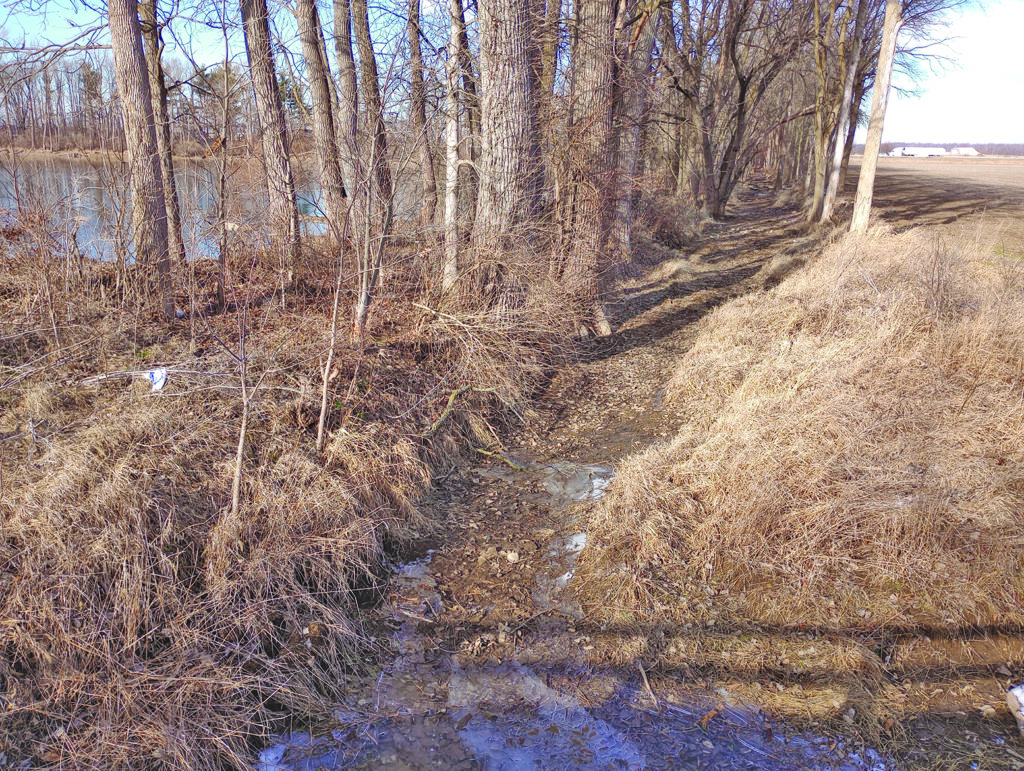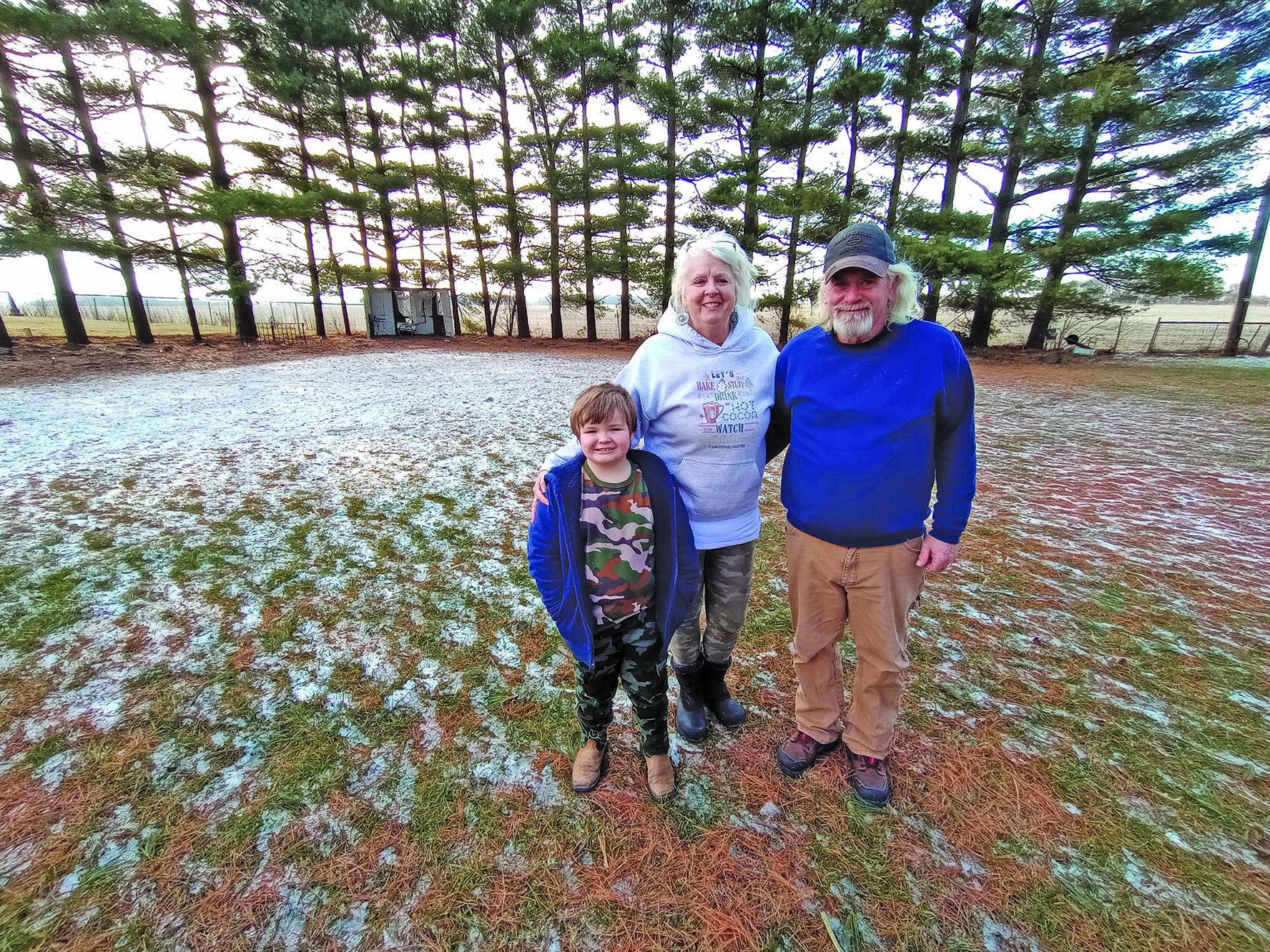David and Lori Garard received unexpected good news last week.
The Indiana Department of Natural Resources no longer considers their Jacksonburg home as sitting in a hazardous flood plain. That will allow them to construct a steel building on their property for David’s workshop.
“We were ecstatic; we were excited,” Lori said about the DNR’s decision.
The Garards expected further delays in what’s been a 16-month dispute with DNR since Lori arrived Oct. 6, 2021, at the county planning office to acquire a permit for the 25-foot-by-30-foot structure. They planned for the building to be ready prior to David’s retirement, providing him a place to keep himself occupied welding and working on his motorcycle.
David retired Jan. 11 after more than 30 years with Barrett Paving Materials, but there’s no building on the grassy area west of the Kepler Street home. Something that could soon change.
Laura Miller, the county’s planning and flood plain administrator, called last week with the good news.
“We were floored when she called,” said Lori, a retired social worker. “We just couldn’t believe it. We were so happy.”
Steve Higinbotham, the county’s director of facilities and development, provided Wayne County commissioners the new map during their Feb. 1 meeting. He, Miller and Brandon Sanders, the county engineer, had all worked to have the DNR reverse its Jacksonburg decision.
“This is really good news,” Commissioner Mary Anne Butters said.
Miller had in October 2021 delivered the bad news that the Garards could not receive a building permit. The DNR had updated the Federal Emergency Management Agency flood plain maps and put most of Jacksonburg, including their property on the community’s southwest corner, inside a flood plain. That meant the Garards’ building would need to be raised seven feet above their property’s elevation for the DNR to allow construction.
“All of a sudden, we’re in this hazardous flood plain zone, having no idea, having plans to have this steel building put up, going in with money prepared to get permits, and they said, ‘I’m sorry, not only are you in this predicament, but the entire town of Jacksonburg,’” Lori said. “It didn’t seem fair that nobody knew what was happening.”
The DNR used lidar surveying technology, which uses pulses of light to determine the shape and distance of objects, to create the new flood plains map. Sanders’ efforts resulted in DNR personnel visiting Jacksonburg.
They found another creek that provided drainage west of Jacksonburg that had not been taken into account, Higinbotham said.
“It shows that their lidar information is not infallible,” he added. “This (map) was created by actually going to the site, and they learned.”

Miller only found out that DNR had originally changed the floodplain map during January 2019. At that time, the DNR stopped two families’ home construction projects on Boundary Road east of Fountain City.
Miller had issued permits for the homes during December 2018, according to FEMA’s flood plain map. After some back-and-forth with the DNR, the county eventually allowed Mark and John Fisher and their families to complete construction of their homes.
However, the Indiana legislature just last year passed and Gov. Eric Holcomb signed a law specifically allowing Wayne County to issue waivers for the Fishers’ homes to make them legal.
That, though, did nothing to help the Garards and other residents of the small Jacksonburg community, tucked near Interstate 70 northeast of Cambridge City.
Despite Martindale Public Fishing Area east of Jacksonburg and Dry Branch Stream adjacent to the lake, the community doesn’t flood. David, who’s 65, has lived there his entire life and hasn’t seen flooding. Miller said the area has gravel in the soil that allows good drainage. There’s so much gravel, in fact, that Martindale was dug for the gravel needed when the interstate was built.
“Even with the hardest rain we’ve ever seen, we don’t get puddles in the backyard, there’s no standing water on the road. Nothing,” Lori said. “I don’t see standing water in people’s yards. It just doesn’t happen.”
The Garards decided to contest the DNR’s decision for themselves and their community, fearing it would die off if it remained in a flood plain. Residents would not be able to build additions or garages, or, in the case of fire or tornado damage, rebuild their homes without meeting the DNR’s flood plain regulations. They worried about property values and residents struggling to sell their homes.
“We knew we had the support, but sometimes that’s not enough, you have to really stand up and fight,” Lori said. “I hate to use the word fight, but we were convicted enough that you have to stand up and do what needs to be done.”
State Rep. Brad Barrett and State Sen. Jeff Raatz became involved, pushing forward the legislation that helped the Fishers. At the same time last year, they were involved in legislation that established a Drainage Task Force to look into the DNR’s actions, not only about flood plains but other drainage issues. The group is charged with recommending legislative solutions that could be considered during the legislature’s 2024 session.
Holcomb appointed Centerville’s Steve Slonaker, an appraiser and farm manager with Slonaker Farm Management, to that group. Slonaker had an issue with the DNR about a farm drainage ditch that he’s maintained for decades. He was required to pay a fee and receive a permit to clear the ditch.
Slonaker’s business involves working in surrounding states. He said Indiana’s regulations are out of date with modern agriculture and more restrictive than those other states.
The task force, which is comprised of six state senators, six state representatives and seven governor’s appointees, has been hearing testimony. Lori Garard is among those who shared their stories with the task force. She said the committee really listened and questioned David Knipe, director of the DNR’s Division of Water, pressing him for answers about citizen complaints.
Slonaker was happy the Garards’ received their good news.
“It’s a wonderful thing,” he said.
The process has been 16 months of frustration, disappointment, confusion and anger for the Garards.
“This has been pretty rewarding,” Lori said. “Not just because we have a good answer, but just seeing the process and seeing the impact of our story and how it helped open the eyes of people we’ve never met before.”
Slonaker said legislators, and others, have become more aware of DNR regulations through the task force’s existence.
Legislation concerning the DNR continues this session. Leising co-authored Senate Bill 242 that would remove the requirement that local planners follow the DNR’s Best Available Flood Hazard Layer when issuing permits. They would have the choice of using state or federal data. The BAFHL is what created the Garards’ problem.
The bill easily passed the Senate and will now be considered by the House.
Should it pass, other Hoosiers could avoid the uncertainty the Garards experienced. When Lori went for the permit in 2021, they had already made the down payment for the building and had the building’s $3,100 door purchased and on site. They then needed a $900 survey of their property to provide data to the DNR.
They really weren’t sure they’d ever be able to construct their building and the adjoining lean-to where they plan to have their grill and chairs to enjoy retirement. Even now, they aren’t rushing into construction — maybe during spring.
“Even though we got this great news and we’re so happy, we’re waiting for the other shoe to drop, because that’s what’s been happening for the last 16 months,” Lori said.

